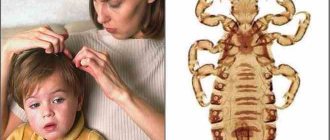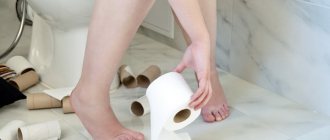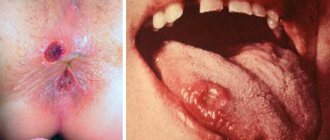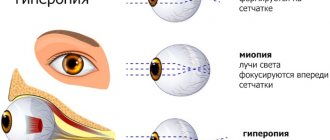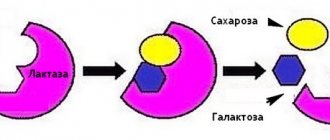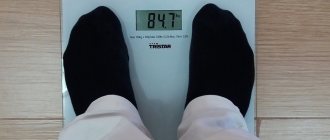For some reason, unfamiliar passers-by and familiar people frown in disgust when they notice a white crumb on the clothes of their interlocutor or a complete stranger. What a nightmare! It's dandruff! But you shouldn't be so critical of it. There is no way to protect yourself from its invasion. White crumbs can appear suddenly in any person, even those who are very clean and attentive to their hair.
Dandruff causes a lot of problems for many people. Discomfort, itching, skin irritation, fragility and hair loss are a tiny fraction of what a person who has white crumbs falling from his head will have to endure. Often no one thinks about why dandruff appears, and immediately after discovering it, they begin to buy a lot of fabulously expensive shampoos and conditioners, blindly believing eloquent advertising. And how can you not believe it! After all, they clearly say and promise that the white crumbs will disappear after the first use.
In fact, dandruff is not that easy to get rid of. It is important to determine its type, find the root cause, and select a comprehensive method for treatment. Of course, prepare for the fact that the struggle will be long.
What is dandruff, the reasons for its appearance
In Latin there is a word dandruff, which is translated as bran. Indeed, the externally exfoliated epidermis on the head resembles them. In medicine, it is called seborrhea (seborrheic dermatitis) and is characterized as a disease that requires competent treatment. In a healthy person, the exfoliation of dead skin cells occurs imperceptibly, everything is perfectly cleaned during hygiene procedures. But there are people whose dermis particles peel off at the speed of sound. And there are certain reasons for this, namely:
- impaired metabolism is considered one of the main causes of dandruff (the body of these people is weakened and vulnerable to pathogenic factors);
- women experience white crumbs on their heads due to hormonal imbalances or during age-related changes;
- endocrine diseases, gastrointestinal diseases, immunodeficiency;
- pathologies of the sebaceous glands are inherited;
- irregularities in diet, lack of vitamins and essential microelements;
- disruptions of an emotional and mental nature after physical overexertion;
- the skin is attacked by yeasts or pathogens;
- epidermis severely overdried by hair dryer and chemical hairdressing procedures;
- improperly organized, untimely hygienic hair care;
- transitional age.
Dandruff often appears after lice control products have been used. These parasites cause serious damage to the condition of the scalp and hair. Chemical medications that can kill an adult can greatly dry out the skin. After the struggle, you urgently need to take care of the nutrition and restoration of the skin and curls.
Why does dandruff occur in winter?
Dandruff appears due to a strong temperature difference between the street and the room. The scalp does not have time to adapt to external factors, the blood vessels narrow, blood circulation worsens, vitamins and nutrients are not supplied, the hydration of the head and hair decreases, and the process of scale exfoliation accelerates.
Common factors also contribute to this process:
- Fungus. In winter, the immune system is weakened, which leads to the proliferation of the fungus Malassezia Furfur, which under normal conditions is not dangerous. There is a failure in cell growth, uneven division and gluing together, which, together with fats, forms white dandruff particles.
- Impaired metabolism.
- Dysfunction of the sebaceous glands.
- Frequent use of hair dryers, curling irons, and straightening irons.
- Poor hygiene.
- Poor nutrition;
- Genetic predisposition.
- Hormonal disorders, especially in adolescence.
- Diseases of the gastrointestinal tract.
- Stress.
Return to contents
What types of dandruff are there?
To begin proper and effective treatment, the first step is to find out what type of dandruff you have to fight. Doctors distinguish several types, each of which has its own characteristics. Seborrhea occurs:
- fat;
- dry;
- mixed.
Mixed seborrhea in most cases affects men. The disease is a combination of two types of dandruff: the oily form appears on the face, and the dry form appears on the hair.
Seborrheic dermatitis occupies a separate stage. It is accompanied not only by peeling, but also by itching and the appearance of inflamed areas on the skin folds. Behind the ears, on the neck, at the back of the head, even on the eyebrows, flaky plaques appear that you constantly want to scratch. Scratched areas often become covered with wounds, which easily become infected. Hair with this form of the disease becomes dry and very brittle, its ends are split. Seborrheic dermatitis requires urgent diagnosis in a hospital setting.
To find out what type of dandruff you have to fight, it is worth studying the clinical picture. Let's consider each option in detail.
Oily seborrhea - signs and sensations
Adolescents suffer from oily seborrhea during puberty. Elderly people can also develop this seborrheic form.
With oily seborrhea, white flakes appear due to the fact that the sebaceous glands begin to work in an actively accelerated mode. So much secretion is produced that the body loses its bactericidal protection. As a result, an excellent environment for the proliferation of fungi and bacteria is created on the skin.
There are two types of oily seborrhea.
- The thick appearance is seen in men who have celebrated their 20th birthday. At this age, the secretion of the glands thickens and begins to be produced in excess. The thickness of the sebaceous mass makes it difficult to pass through the glandular gaps, which leads to their blockage. At the same time, you can see on the skin how the pores have expanded. All this causes peeling and the appearance of glued dandruff flakes. They are quite large and sticky.
- It is women who suffer from oily liquid seborrhea. Their sex hormones, when produced, dilute the secretion. The disease begins unnoticed and can occur at any time throughout life. It appears as small yellowish lumps that are difficult to remove from the hair. An advanced disease is accompanied by itching.
The first signs of oily seborrhea are difficult not to replace. Hair quickly loses its purity. It seemed like just yesterday that my hair was washed, but today my hair looks dirty and greasy. If oily seborrhea has become severe, then the strands stick together in a bun due to greasiness. At the same time, the skin constantly itches, the itching does not give rest. Scratching causes bleeding wounds that take a long time to heal. Skin infection with staphylococcal microorganisms is possible.
Over time, the skin of the scalp becomes covered with yellowish flakes that are difficult to remove. Painful boils, acne, and ulcers may appear on the back of the head and throughout the head.
The most paradoxical thing is that with oily dandruff, the skin becomes tight and dehydrated. With this form of the disease, it is unwise to use drying hair washes, masks, and balms. If you do not provide sufficient care for your hair and do not follow the rules of hygiene, then seborrheic peeling intensifies, and in this case it will be difficult to overcome the disease. If oily seborrhea is left unattended, a person may go bald.
Diagnosis and treatment of dandruff
To cure dandruff, you need to visit a trichologist . He will conduct all the necessary tests and analyzes that will show what caused the problem. Very often, based on the results of the testimony, a person is referred to other specialists, because the reason may lie in some internal processes and diseases.
When all the necessary medical diagnostics have been carried out and the root of the problem has been established, treatment can begin. There are many remedies that can help in this situation.
Medications
Both local remedies and oral medications can be prescribed. First of all, there are therapeutic and preventive shampoos. They must contain the following substances:
Only in this case will such a remedy be of any use . Accumulating in the skin, they gradually destroy both the fungus and its consequences. It is more effective to use them in combination with masks and lotions that also contain active substances.
In this case, internal causes are treated in accordance with test results . Hormonal levels are regulated, vitamins and microelements are taken.
IMPORTANT! It is also necessary to improve your diet, change your diet and refrain from foods that provoke excessive sebum secretion.
Folk remedies for dandruff
Traditional methods are good as auxiliary methods . It has long been noted that there are ways to relieve the symptoms of seborrhea at home.
For example, natural and essential oils remove annoying scales, restore the balance of the sebaceous glands, moisturize or remove clogged pores, and some even destroy fungus. They can be used in combination with each other in masks, or added to shampoo or a hair mask.
Apple cider vinegar, used as a mask, also relieves the symptoms of seborrhea. It is especially good for oily seborrhea, as it dries out the skin.
IMPORTANT! When using vinegar and essential oils, strictly monitor the exposure time so as not to get burned!
Medicinal herbs are suitable for washing your hair and rinsing your hair after it. They are good both in the process of exacerbation of the disease and for prevention. For example, nettle, calendula, chamomile, burdock root and St. John's wort can help against dandruff. In combination with oils, their alcohol solutions will also be effective.
Sea salt, dissolved in water in a ratio of 1 tablespoon per 0.5 liter of water, is applied as a mask to the roots of washed hair and lasts for 5-10 minutes. This method helps destroy the fungus and relieve itching .
IMPORTANT! These methods only work in complex treatment , otherwise you can start treating seborrhea.
Procedures to treat the disease
Massaging the scalp helps very well - both when washing your hair to get rid of excess scales, and dry hair to stimulate the flow of blood and lymph to the hair follicles and skin.
A variety of physiotherapeutic procedures work well. They are prescribed by the attending physician. These include:
- ozone therapy – for drying and cleansing the skin;
- mesotherapy – to increase immunity and restore nutrition to skin cells;
- laser therapy – destroys fungus, relieves inflammation and irritation, improves blood circulation;
- procedures Darsonval , Bioptron - destroy pathogenic bacteria and fungus.
They are especially effective in combination with drug treatment.
You should not use hair coloring or curling products as this will only cause more damage to your hair.
If possible, you should also avoid using a hair dryer. Another thing is vegetable dyes like henna and basma. They additionally strengthen the hair and nourish it from the inside.
IMPORTANT! It is necessary to keep brushes and combs clean, wash your hair on time, not allowing your hair to get too dirty.
Dry form of dandruff
Understanding why a person has dry dandruff is quite simple. The fat glands do not produce secretions at all or work in a slow rhythm. The cause may also be hormonal imbalance, vitamin deficiency, or lack of micronutrients in the body. Simply put, the body is exhausted and does not receive enough nutrition to produce secretions.
Dry dandruff has the following symptoms:
- hair becomes dry, brittle, and loses its natural color;
- when examining the skin, dehydrated cracks with exfoliated flakes of the epidermis are visible, which, as soon as you blow, fly off the head with the ease of fluff;
- white flakes are large in size;
- on the skin, if there is no treatment, red areas (seborrhoids) appear over time;
- the skin feels tight, which causes discomfort.
Modern doctors do not distinguish between oily and dry seborrhea. Aesculapians explain that dry dandruff is often a consequence of oily seborrhea, in other words, the second stage of the disease.
Diagnosis of the problem
Self-medicating dandruff at home is not wise in all cases. By incorrectly identifying the type of seborrhea, you can aggravate the condition of your hair. In addition, dandruff often appears due to a serious fungal infection. Before using alternative treatment, such a cause should be excluded.
A competent dermatologist can find out the cause and explain how best to deal with dandruff. The doctor will definitely send the patient to the laboratory for the following tests:
- general blood analysis;
- biochemistry;
- checking immunoglobulin levels;
- microscopic examination of white flakes;
- luminescent examination of the dermis (in case of fungal infection of the skin, the glow will be green).
Based on the test results, the dermatologist will prescribe treatment and advise on how to choose the right folk remedy for dandruff.
How to treat dandruff with shampoo
Why dandruff appears, we figured it out, found out its nature. It's time to think and choose a treatment method. In most cases, local treatment is sufficient. Shampoos, masks, sprays, balms are used. If the situation does not change for the better, dandruff will have to be treated comprehensively with medications.
First aid for dandruff is the right shampoo. It can be therapeutic or preventive. The medicinal shampoo contains antifungal components. It can be used several times a week. Preventive shampoo is used after recovery to prevent the reappearance of white flakes.
When choosing a medicated shampoo, pay attention to the composition. All components must include:
- the antifungal component ketoconazole, which destroys and destroys the fungus;
- zinc pyrithione (eliminates inflammation and irritation due to oily dandruff);
- selenium sulfide (can normalize cellular renewal of the dermis);
- salicylic acid acts to slow down the production of sebaceous gland secretions (not used for dry dandruff);
- tar (participates in slowing down the renewal of the epidermis, helps relieve itching, stop inflammatory processes).
Choosing an effective shampoo to treat dandruff is difficult, but there is one secret. If among all the components there are several antifungal ingredients, you can safely purchase it. With this shampoo, dandruff will quickly disappear.
yxod-za-volosami.ru
How to cure at home
Traditional medicine offers many effective recipes to combat dandruff. According to statistics, people use homemade masks to eliminate dandruff much more often than products from the pharmacy.
Masks for any hair type
Oil-based anti-dandruff masks have a good effect. Olive, almond, peach and castor oils are suitable as such a base. You can add yolk, mayonnaise, honey, herbal tinctures, lemon, radish juice to it. We offer several recipes for such masks:
Butter with yolk
Mix a little vegetable oil with the yolk. Rub the mixture into your scalp, warm your head and leave for 30 minutes. Wash your hair with shampoo, rinse with herbal decoction;
Vegetable oil
Parsley and castor oil
A mixture of parsley and castor oil. Parsley is a popular remedy for dandruff. Grind its leaves, pour in vegetable oil and place in a water bath (30 minutes). Strain the resulting warm mixture and rub into the scalp. The course of treatment is 2 weeks, the mask should be done every other day;
Eggs with mayonnaise
Mix 1 yolk, 1 tbsp. spoon of mayonnaise, 1 teaspoon of honey. Apply to hair and rinse with warm water after 2 hours;
Treat with nettles
Nettle against dandruff. Brew a glass of crushed fresh or dry nettle leaves with two glasses of boiling water. Cool and strain, rinse your hair with the infusion every time after washing;
Nettle
Onion skin treatment
2-3 tbsp. spoons of onion peel, 2 spoons of oak bark, pour 1 liter of boiling water. Cook over low heat for 1 hour, then cool and strain. Wet your head with the broth, insulate it with cellophane and leave for 2 hours. Then rinse with warm water. Repeat the procedure 2 times a week. The mask will eliminate dandruff and give healthy shine to hair.
Honey composition
Mix honey, aloe juice, lemon juice and burdock or castor oil in equal proportions. Apply to hair and wash off with shampoo after 2 hours. The course of treatment is 1-2 times a week for a month.
Olive oil with lemon
Olive oil and lemon mask. 4 tbsp. mix spoons of warm olive oil with 1 tbsp. spoon of lemon juice. Rub the mixture into the hair roots and leave for 30 minutes, then rinse with shampoo.
Remove with essential oil
essential oil for dandruff. Add a few drops of eucalyptus or tea tree essential oil to any anti-dandruff mask. The result will not be long in coming: essential oils destroy microbes and pathogenic fungi, dandruff disappears;
Tea tree oil
Folk remedies for dry dandruff
- mix 1 yolk, 1 tbsp. a spoonful of castor oil and 1 teaspoon of calendula tincture. Rub thoroughly into the scalp, keep under plastic and a towel for about 2 hours, rinse with shampoo. Apply this mask 2 times a week for 1-2 months;
Tincture of calendula
- in 4 tbsp. spoons of kefir add 1 tbsp. a spoonful of olive, burdock or castor oil and an egg yolk. Do not wash your hair before applying the mask. Distribute the mixture over the entire length of your hair and rub thoroughly into the scalp. Keep under plastic and a towel for about 2 hours, then rinse with shampoo;
The effect is noticeable after the first mask. Use the mask 2-3 times a week.
- grate the onion to obtain 1 tbsp. spoons of juice. Add 2 tbsp to it. spoons of vodka and 1 tbsp. a spoonful of castor oil. Rub into scalp and keep for about 1 hour under a towel. Rinse with shampoo, use conditioner to remove onion odor and rinse hair with water and lemon juice. Apply the mixture 1-2 times a week;
- Mix 2 yolks with the juice of half a lemon. Add 1 teaspoon castor oil. After an hour, rinse with warm water without shampoo. You can use the mask every other day;
- Apply yogurt or kefir to the entire length of your hair, after half an hour, rinse with warm water.
Curdled milk
Hair masks for oily dandruff
- Lemon juice is an excellent remedy for oily scalp with dandruff. Dilute lemon juice with half and half water and rub into the scalp. Leave on for 15-20 minutes, then wash your hair as usual. Use this mask 2 times a week for a month;
- Rub the alcohol tincture of calendula into your scalp and wash your hair after 30 minutes. This product fights the fungus that causes dandruff and strengthens the hair;
You can mix calendula tincture with castor or burdock oil.
- Break off a few of the bottom leaves of the aloe and place in the refrigerator for a few days. Squeeze out the juice and rub into the scalp without rinsing. Aloe promotes overall skin health and eliminates oily dandruff;
aloe leaves
- Boil 50 g of nettle in 500 ml of water for 10-15 minutes. Squeeze the herb and apply the paste to the scalp. Keep the mask on for 1.5-2 hours, then wash your hair, dry your hair and rinse it with the remaining nettle infusion. You can use this mask 2 times a week;
- Mix castor oil, honey, lemon juice, aloe juice, mayonnaise in equal proportions (on average, 1 teaspoon of each component). Rub the mask into your scalp and leave under plastic and a towel for an hour. Rinse with shampoo and rinse with water and lemon juice. Use the mask 1-2 times a week;
- Among the oils for oily hair, almond oil, calendula oil or St. John's wort oil are recommended. In 1 tbsp. a spoonful of oil, add a few drops of essential oil of tea tree, eucalyptus, lavender, juniper or cypress, then rub into the scalp, and rinse off after 1 hour;
Almond oil
- 2 tbsp. dilute tablespoons of green clay with a decoction of herbs to a thick consistency, add 1 egg yolk and 1 tbsp. a spoonful of apple cider vinegar. Cover your head with plastic and a towel and leave for 20-40 minutes. Wash off the mask with warm water and shampoo. Be sure to use conditioner to make your hair soft. You can rinse your hair with the remnants of the herbal decoction that was used to dilute the clay;
- Birch tar can be used as a radical remedy for dandruff. Tar has anti-inflammatory and antifungal effects. The result comes immediately after the first mask, and the effect lasts a long time.
It makes sense to use this mask if you have oily hair and dandruff appears suddenly. In this case, dandruff is most likely caused by a fungus, and the tar will help to quickly cure it.
The secrets of the appearance of “hair snowfall”
Dandruff flakes are exfoliated areas of the scalp that occur in excess. The skin of all people changes. In a healthy person, dermal cells die off after 30-35 days, but in some situations malfunctions occur in the human body, the cells begin to die after 10 days.
Cellular growth accelerates significantly, dead skin flakes stick together and begin to peel off in large flakes. Dandruff appears.
Over time, peeling increases and severe itching occurs. When people scratch, they re-infect the epidermis, which can cause the appearance and growth of pustules. The dandruff crust completely blocks air access, which greatly weakens the hair roots. The hair on the head becomes thinner and then falls out.
Until now, experts cannot come to a single opinion about what the real causes of dandruff are, but they name several situations that provoke its occurrence.
Causal factors for dandruff
There are several provoking phenomena that cause the appearance of white “snow” on the head. The causes of dandruff can be very different.
- Dry skin is a known causative factor in the formation of dandruff, especially when it comes to the winter season. It is during winter that people neglect to drink enough liquid and often use heating devices.
- Fungi are common causes of dandruff. Yeast-like elements “settle” in the scalp area and are found in almost all people. But sometimes they multiply rapidly, causing irritation of the scalp.
- Hormonal changes lead to the appearance of dandruff. Age-related changes have a noticeable impact on the overall functioning of the sebaceous glands, which is why dandruff often forms in adolescents and pregnant women.
- The presence of seborrhea, associated with problems of dysfunction of fat secretion in the scalp. When the function increases, the glands begin to actively produce sebum, and dandruff appears.
So, we looked at what dandruff is and what factors usually lead to its occurrence. But when this disease develops, it is necessary to pay attention to several more circumstances that can also lead to the appearance of a white “cap”.
Alternative causes of the problem
- The use of high-hardness water for washing hair;
- use of cosmetics that are incorrectly selected by type;
- excessively frequent dyeing or perms;
- using a hair dryer to dry hair prone to dryness and brittleness;
- the use of thermal hair styling and hair styling products;
- insufficient amount of minerals and vitamins received by the body;
- increased stress and depression;
- the presence of concomitant diseases - eczema, psoriasis, dermatitis;
- the presence of hereditary diseases of the immune system in the body.
Now it’s clear why dandruff usually appears and how it happens. All that remains is to decide on effective methods for eliminating it, which will increase your self-esteem and make your hair condition much better.
Common causes of dandruff syndrome
Active microorganisms. At the end of the 1870s, it was recognized that a number of lipophilic fungi influence the occurrence of the disease. The skin of our scalp is an excellent springboard for the life of various microorganisms: propionibacteria, malassezia, staphylococci. If their number increases by 1.5-2 times, symptoms of seborrhea and itching appear.
In the normal state, fungi do not manifest themselves, but if there is a malfunction in the activity of the secretory glands of the skin, the microorganisms are activated. Why is this happening? The best food for fungi is secretion, which becomes more abundant when the glands are malfunctioning. The type of dandruff will depend on the amount of sebum produced in the skin:
- With insufficient secretion, dry seborrhea appears.
- If sebum is produced in excess, it becomes oily.
Recommendation. Regardless of the type of disease that “decided to visit you”, without identifying the cause of the imbalance in the sebaceous glands, it is impossible to get rid of dandruff in this case. Its amount will continue to increase, which can lead to severe itching and suppuration.
What is your reason?
Metabolic disorder
A very common cause of dandruff and itchy scalp. If the body’s most important metabolic processes, which are responsible for normal functioning, are suddenly disrupted, numerous problems begin. One of these troubles is seborrhea. Why might metabolic imbalance occur?
- A constant diet with an abundance of fatty, sweet, flour, and smoked foods. An unbalanced diet with a lack of vitamins is a huge risk of getting yourself into trouble.
- Strict, “starvation” diets. When a person “sits down” on a health-killing fast, his metabolism collapses, seborrhea and unbearable itching appear.
Serious illnesses
Frequent causes of dandruff are the presence of certain diseases or severe conditions of the body in a person. What is needed in this case of illness?
- Severe, prolonged depression.
- Chronic lack of normal sleep.
- Constant heavy physical activity.
- Neurological diseases (Parkinson's disease).
- Seborrheic dermatitis (chronic inflammation of oily skin).
- Psoriasis (severe illness provokes the accumulation of dead epidermal cells, which create thick sticky scales).
- Previous strokes, heart attacks.
- Immunodeficiency states.
- Eczema (inflammatory skin disease).
- Pathologies of the bronchopulmonary system.
- Disorders of the gastrointestinal tract.
- Contact dermatitis. A condition in which the sensitivity of the skin to care products sharply increases, resulting in flaking, itching, redness and seborrhea.
Illiterate care
Why do some people get terrible dandruff on their scalp if they constantly wash their hair? This problem applies to both dirty people who don’t like taking care of themselves, and clean people who like to wash their hair every day.
Each wash of your curls removes the protective lipid layer from the scalp. The sebaceous glands immediately begin to create a new layer, and if the hair is washed too often, the glands simply become overloaded and their work malfunctions.
What can you expect from ardent opponents of cleanliness who don’t like to wash their hair at all? Profuse seborrhea. It is formed due to the constant accumulation of old sebaceous secretions mixed with dead cells, creating flaky spots and itching.
Skin Features
Too dry dermis is one of the common causes of scalp seborrhea. The risk of disease formation in this case is especially high in winter. At this time, a person consumes little liquid and uses heating equipment, which dries out the air.
Seborrheic flakes, which are caused by too dry epidermis, are smaller in size and are not sticky. Light scales can almost completely cover a person's clothing.
Too oily epidermis also plays a bad role. Grease provokes the appearance of larger, sticky, dense dandruff. In particularly serious cases, shiny dermis can cause a dangerous disease - seborrheic dermatitis (a common cause of itching and dandruff).
Man and woman
In principle, an unpleasant syndrome appears equally in men and women. But there are some gender-specific life periods that provoke the onset of the disease. Such states of the body of women and men are experienced differently by people.
Female causes of seborrhea
The rapid restructuring of the female body begins during the difficult period of pregnancy and menopause for all representatives of the fair sex. It is these two stages in women that entail the appearance of unsightly scales falling on the shoulders.
Inept Care
The second most popular reason why women develop seborrhea is the abuse of various hair care products. This includes regular use of a hair dryer, perm, and heat styling.
Itching and dandruff in women can also be caused by incorrectly selected cosmetic products intended for the head and hair, or by coloring them too often.
Causes of dandruff in men
The stronger sex is more susceptible to ugly misfortunes than the fair sex. In men, the determining role in the appearance of seborrheic particles is played by the presence of a large amount of male hormones, and their sebaceous glands are larger than in women, which also provokes the development of the disease.
Teenage years
Seborrhea also appears in men during the period of hormonal changes. But this happens during the period of adolescence. At this age, the teenage body simply “rages”, provoking the appearance of pimples and blackheads. Blockage of the sebaceous glands occurs throughout the body, causing dandruff on the head.
In this case, the disease goes away on its own. After 20-25 years, hormones in men “calm down”, and the seborrheic problem disappears.
Ignorance of care rules
Many men do not know how to choose the right shampoos and gels and do not take into account the condition of their hair. Unsuitable hair washes often cause white flakes to appear on your shoulders.
Body conditions
What else can cause dandruff on the scalp? Very often, seborrhea occurs in older men. The reason for this is an imbalance of estrogens (female hormones) and androgens (steroid male hormones). At this age, the functioning of the adrenal glands and testicles is often disrupted, which also provokes the disease.
Causes of dandruff
Seborrhea (“seborrhoea” , from Latin sebum - fat and Greek rhéo - flow ) (a more general concept of dandruff) is a disease caused by a disorder of sebum formation, manifested by an increase or decrease in the production of sebaceous secretion, as well as a change in the chemical composition of sebum.
The main cause of dandruff is dysfunction of the sebaceous gland. It can be caused by improper metabolism, problems with the gastrointestinal tract, dysfunction of the pancreas and thyroid glands, or a fungal infection, and sometimes from all of them at the same time. An important factor in the manifestation of dandruff is hereditary predisposition (features of the structure of the skin and its secretion).
The quantity and quality of sebum depend on the general condition of the body (especially the endocrine and nervous systems, digestive tract), gender and age, concomitant diseases, etc. The course of the disease is aggravated by chronic infections, hypovitaminosis (especially , , , , ), consumption of large amounts of sweet and fatty foods, as well as skin contamination. The largest amount of sebum is formed and secreted during puberty.
In old age, its amount decreases significantly. Sebaceous secretion disorder usually occurs as a result of an imbalance between estrogens (female hormones) and androgens (male hormones) towards the latter, which is most often observed between the ages of 14 and 25 years (during puberty). During this same period, we notice oilier skin on the face, back and chest. With seborrhea, the composition of the sebaceous secretion changes mainly due to an increase in free fatty acids in it.
What to do?
What steps should you take if you find white scales on your head, clothes, or hair? The most important thing is to analyze your own way of life and understand why the unpleasant syndrome arose.
Advice. Review your diet, gradually switch to a healthy lifestyle, carefully choose care products and cosmetics.
And time-tested, good old folk recipes will help you completely get rid of dandruff rashes.
Health and beauty to your hair!
Share this information with your friends on social networks!
lady-journal.info
What is dandruff
Dandruff is an extremely unpleasant manifestation of seborrheic dermatitis, which can develop in a person of any age on any type of hair. By forming a kind of crust on the scalp, dandruff makes it difficult for it to come into contact with air, which leads to weakening of hair follicles and hair loss, as well as to fragility and brittleness of hair shafts.
Depending on the functioning of the sebaceous glands, dandruff can be oily or dry.
- A person with dry dandruff
begins to feel severe itching soon after washing his hair. Dry small scales on his head are located either in patches or evenly distributed throughout the entire scalp. They fall abundantly on the shoulders, causing a lot of inconvenience to their owner, since others, as a rule, shun such a person. A constant feeling of itching is a consequence of insufficient secretion of sebum. The hair of patients with dry type of dandruff is usually thin, overdried, with severely split ends. Dry type of dandruff is the most common. - Oily dandruff
is also accompanied by severe itching, but even freshly washed hair continues to look greasy and unkempt. Although not so noticeable, oily dandruff, however, poses a greater danger to hair than dry dandruff. Quite large particles of keratinized epithelium, having peeled off, do not fall off onto the shoulders, but continue to remain on the head, forming a dense crust on its surface. Due to the abundant secretion of sebum, this crust becomes an excellent breeding ground for the development of colonies of pathogenic fungi. The presence of inflammatory processes is a characteristic condition for the scalp in a patient with oily dandruff.
Reasons for appearance
Why does dandruff appear on the head?
? As a rule, this is due to a whole range of reasons. Dry or oily dandruff can appear due to:
- hereditary predisposition;
- malfunction of the immune system;
- dysfunction of the endocrine glands;
- unhealthy diet;
- a number of diseases of the gastrointestinal tract;
- exposure to severe stress and central nervous system diseases;
- hormonal imbalances;
- severe vitamin deficiency;
- insufficient functioning of the sebaceous glands, leading to excessive dryness of the scalp;
- severe overheating or hypothermia of the scalp;
- using the wrong shampoo;
- allergic reaction to the material of the headgear;
- violations of the rules of scalp care (as a result of frequent dyeing, blow-drying, use of hairdressing irons and curling irons);
- poor hygiene of the scalp.
About the mechanism of formation of dry dandruff
The main cause of dry dandruff is the activation of the opportunistic fungus Pityrosporum Ovale
.
Constantly present in small quantities in the body of every healthy person and without showing itself in any way, when favorable conditions arise (severe stress, hormonal imbalances and weakened immunity), it begins to multiply rapidly, reducing the duration of the cell exfoliation process to one week. , a lot of dandruff
is formed on the surface of the scalp - dry grayish particles of dead epithelium, easily separated from the head, contaminating hair and clothes.
About the reasons for the formation of oily dandruff
Oily seborrhea develops due to the increased functioning of the sebaceous glands, which produce too much sebum. Oily seborrhea is divided into liquid and thick.
- The liquid form of oily seborrhea is characterized by the presence of shiny skin with gaping enlarged pores, reminiscent of an orange peel. Due to the abundant secretion of sebum, the hair (always oily) sticks together, forming untidy strands, generously strewn with a large number of yellowish skin scales tightly sitting on them. The changed chemical composition of the secretion of the sebaceous glands leads to the loss of its initially inherent sterilizing qualities. As a result, ideal conditions are created for the occurrence of pustules and inflammatory processes in the scalp.
- The thick form of oily seborrhea leads to significant thickening of the skin, a decrease in its elasticity and dilation of the ducts of the sebaceous glands. When these ducts are blocked by horny plugs from particles of rejected epithelium, blackheads - comedones - are formed. The hair of a patient with a thick form of oily seborrhea is characterized by increased stiffness and coarseness.
Many experts consider the question of classifying types of dandruff to be incorrect. From their point of view, only dry seborrhea, characterized by abundant exfoliation of the epithelium, can be considered true dandruff.
Types of seborrhea
There are oily seborrhea (thick and liquid) and dry seborrhea. Manifestations of seborrhea are most pronounced in areas of the skin where sebaceous glands are located in large numbers: face, scalp, chest, back.
Thick form of oily seborrhea
In this case, the skin is thickened and its elasticity is reduced. The skin color is brownish-gray, the mouths of the sebaceous glands are significantly enlarged, the hair is thick, coarse, and hard. Often the excretory duct of the sebaceous gland becomes clogged with sloughing skin cells soaked in sebum. If this element is squeezed, a thick greasy mass is squeezed out. This is how a comedon (blackhead) appears - a horny plug. With this form of seborrhea, sebaceous gland cysts (atheromas) are quite common, and when opened, a mass similar to cottage cheese is released. In case of inflammation of the atheroma, it is opened, pus is released, and then a scar is formed.
Complications of this form of seborrhea are pustular skin diseases caused by staphylococci and streptococci, for example, boils.
Liquid form of oily seborrhea
With this form of seborrhea, the skin resembles an orange peel: the pores are enlarged, the skin is shiny, and sebum is secreted in excess from the dilated ducts of the sebaceous glands. The hair on the head shines, has the appearance of being lubricated with oil, is saturated with sebum already 2-3 days after washing it, and sticks together into strands. The hair is covered by tightly clinging abundant yellowish scales of skin. Itching of the skin may occur, as well as the development of baldness. Complications in this case are the same purulent skin diseases, but already pronounced and more severe, such as furunculosis - multiple boils, impetigo - damage to the hair follicles with the formation of pustules in their place, which, when opened, turn into thick honey-colored crusts; after falling off, pigment spots may remain.
Dry seborrhea
With this form of the disease, the appearance of dry skin is created, although sebum is produced, but it is viscous. It is poorly secreted from the sebaceous glands, so the surface layers of the epidermis look dry. In this case, the skin is very sensitive and easily irritated. Dandruff completely covers the scalp and hair, falls off easily, and itches. Sometimes dandruff is layered on top of each other, forming crusts of grayish-white or yellowish-gray color. Peeling develops either in the occipital-parietal region or over the entire surface of the scalp. Hair is dry, thin, brittle, with split ends.
Read also: Arterial hypotension (Hypotension). Causes, symptoms and treatment of hypotension
With dry seborrhea of the scalp, a microscopic fungus is activated - "Pityrosporum ovale" , also known as "Malassezia Furfur" , which is present in many people and does not cause the disease, but under certain conditions - intense physical work, mental stress, decreased immunity, the postpartum period etc. - it becomes more active, becomes dangerous to health and intensifies seborrhea.
Mixed seborrhea
This type of seborrhea is characterized by a combination of signs of oily and dry seborrhea, for example, the skin of the face - forehead, nose, chin - is oily, and on the cheeks - dry. In addition, one can observe cases of mixed forms of oily seborrhea: signs of a liquid form of oily seborrhea are expressed on the face, and a thick form on the scalp.
Separately, it is worth mentioning such a common complication of seborrhea of the scalp as seborrheic alopecia (baldness). It appears as a result of improper or completely absent treatment in approximately 25% of people. Most often this process develops as follows. At first, hair loss is moderate and does not go beyond the normal state, in which increased sebum secretion begins (physiological seborrhea). In some patients, physiological seborrhea disappears on its own after 2-5 years and the amount of sebum secreted becomes normal. In other cases, this process does not normalize on its own and persistent seborrhea subsequently forms, ultimately leading to hair loss. The lifespan of new hair is shortened, it becomes thin, thins out and is gradually replaced by vellus hair. Itching, pain, discomfort and a feeling of tightness of the scalp appear. In women, hair thinning most often occurs in the frontal region, in contrast to men, whose hair falls out heavily in the frontoparietal region and thins at the temples and back of the head. There is pronounced flaking (dandruff) on the scalp; the scales are grayish-yellow, greasy, easily separated when scraped, some of them are located on the hair. When examining the skin of the scalp under a microscope, it is clear that the root sheath of the hair, papilla and bulb are strongly, and sometimes irreversibly, changed, and therefore the renewal of lost hair is almost impossible. In such cases, women often experience menstrual irregularities.
Seborrheic dermatitis
It is characterized not only by increased exfoliation, but also by inflammation of the skin, itching, especially in the areas of skin folds, behind the ears and neck area. Inflammation and peeling can also be observed in the eyebrow area. When a person starts scratching these areas, infection can easily get there. Hair with seborrheic dermatitis is usually dry, thin, brittle, and with split ends.
Treatment
So, the patient was sadly convinced that he had dandruff. How to get rid
from this unpleasant disease? First of all, it is necessary to find out the exact reason for its appearance. To do this, you should contact qualified specialists: a trichologist or a dermatologist. They are the ones who can determine the cause of seborrheic dermatitis, the degree of its severity and choose the only correct treatment tactics for each individual patient.
Sometimes this requires consultation with a number of specialists.
- If there is a suspicion that the cause of seborrhea is a hormonal imbalance, the patient is referred to an endocrinologist
.
In this case, women should definitely visit a gynecologist
. After a laboratory blood test (for hormones), the patient is prescribed medications that normalize hormonal levels. - If the appearance of dandruff is provoked by emotional tension or nervous stress, the patient should visit a neurologist
. He will select a drug that will help cope with this condition. - To confirm or rule out the immune nature of the disease, as well as the influence of dysbiosis and a number of pathologies of the gastrointestinal tract, the patient is referred to an immunologist
and
gastroenterologist
.
Having eliminated the main cause of the disease, they begin to treat the external manifestations of seborrhea. How to cure dandruff on the head
?
- To wash away sebaceous secretions, the patient is prescribed antifungal medicinal emulsions and shampoos.
- To treat external manifestations of seborrhea, it is necessary to use special sebum-regulating masks containing a number of medications: antimicrobial (zinc pyrithioneate), antifungal (bifonazole, ketoconazole), exfoliating, cytostatic (reducing the rate of cell division), keratolytic (removing desquamated epidermis) and herbal extracts (relieving irritation). The exposure time for masks containing at least two components from this list is from twenty minutes to half an hour.
- What if the patient has dandruff complicated by an infection? How to deal with it? It is treated with antibacterial drugs containing zinc.
- Lotions containing salicylic acid have an excellent exfoliating effect.
- To stimulate the immune system, the doctor will prescribe multivitamins and drugs that normalize intestinal microflora (hilak forte, lactofiltrum).
- To improve local blood circulation, biogenic stimulants (therapeutic mud, propolis, mumiyo, placenta extract) can be prescribed.
- Taking brewer's yeast, rich in B vitamins, is extremely beneficial.
- During the treatment of seborrhea, it is necessary to refrain from any hairdressing manipulations associated with hair coloring or lamination.
Treatment of seborrhea (dandruff)
It is better to treat dandruff under the guidance of a trichologist, because... When treating seborrhea, it is necessary to first find out and eliminate the causes of the disease. The specialist determines the severity and
selects medications to treat your particular case. Since seborrhea causes disruption of the activity of the sebaceous gland, which is located in the lower layers of the epidermis, treatment should be aimed at reducing sebum production, that is, be “intradermal”. Shampoo is necessary in order to wash away sebaceous secretions from the surface of the scalp, therefore, in combination with it, it is necessary to use sebum-regulating masks or lotions that are kept on the head for 20-30 minutes.
If you don’t have time to visit a doctor or you are used to relying on yourself in these matters, then before you buy one of the anti-dandruff products, carefully read the instructions for it. So…
Medicines and components that should be present in anti-dandruff (seborrhea) preparations:
Ketoconazole (Nizoral, Dermazole shampoos) . Effective against the fungus that causes dandruff, but dandruff can develop resistance to the substance, which explains the reduced effectiveness of ketoconazole with long-term use
Bifonazole (Lotion Bifon). Similar in action to ketoconazole, but lingers longer in the scalp; resistance to bifonazole does not develop or decrease the sensitivity of the fungus that causes dandruff.
Salicylic acid (Sulsena), selenium disulfide, octopyrode. This product removes dandruff and prevents the formation of new “flakes”, but will not be able to cope with the cause of all troubles - skin fungus.
Tar (Friderm shampoo) and sulfur. They actively exfoliate and remove cells, so you should definitely use them at the first stage of the fight against dandruff.
Read also Malignant tumor (Cancer) - causes, symptoms, types and treatment of cancer
Important! It is desirable to have 2-3 components from the list. You should balance your diet: limit your consumption of sweets and fatty foods. Food should be rich in fiber, vitamins, and dairy products. Also, if you have seborrhea, it is not recommended to dry your hair with a hairdryer.

